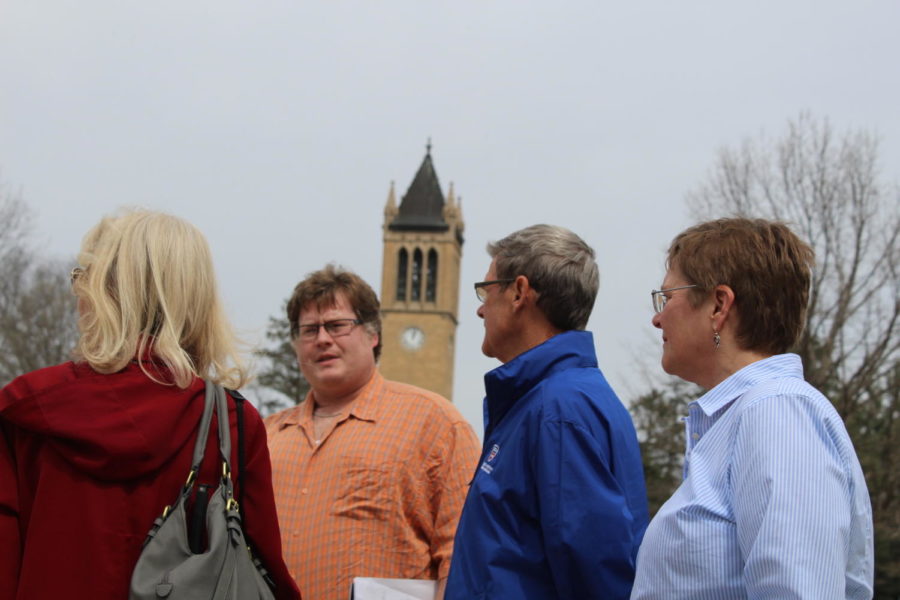Art Walk explores connection between art, poetry
April 12, 2017
University Museum’s art walk on Wednesday drew inspiration from National Poetry Month as visitors toured artwork on campus that inspired or was inspired by poetry.
David Faux, interpretation specialist from University Museums, led the tour group. The walk’s theme focused on how art builds on itself, and Faux read several pieces of poetry that connected to the different works of art.
“We always want to encourage people to look deeper at the art they pass by every day,” Faux said.
The Fountain of the Four Seasons was the first stop. Its sculptor, Christian Petersen, was inspired to create the fountain after a friend who was involved with the Osage Native American tribe gave him a book of poetry.
The particular poem that inspired the fountain was a chant of thanksgiving, which celebrated the cyclical nature of agriculture, the seasons and life.
“The women that modeled for the fountain were from the Meskwaki settlement,” Faux said, noting that Petersen had a very close relationship with those who modeled for him.
Students often come on art walks as part of class projects, and Faux said many of the students write about different works of art on campus as part of creative writing projects.
“Every semester we get a new batch of poems and stories, and it’s great to see that next generation’s interpretation,” Faux said.
Another work of art was the sculpture of George Washington Carver outside of Carver Hall. Carver was the focus of last month’s art walk. Xavier Cavazos, 2013 graduate of Iowa State’s Master of Fine Arts program, wrote a collection of poems dedicated to Carver’s life and achievements. Faux read a poem about Carver receiving a posthumous honorary doctorate from Iowa State.
Cavazos also wrote a poem about The Dinkey, which was a small train that transported students between Iowa State University and downtown Ames. The Hub was built on top of The Dinkey’s last stop. Faux noted that while this stop wasn’t a piece of artwork, it was a part of the history of Iowa State. In the poem, Cavazos parallels the old hub to the new Hub as if he’s explaining the modern perspective to Carver.
“This poem really illustrates the subtle progress of Iowa State,” Faux said.
The most controversial of the artwork was hidden in an alcove behind Morrill Hall, where the “Reclining Nudes” lie hidden behind the Hub.
“These had sort of a scandalous controversy, which is sad because it doesn’t really deserve this, but it makes for a fun story,” Faux said.
Originally, the work was sculpted by Petersen for the all-female dorm in Roberts Hall. Petersen drew inspiration from “Sancta Ursula” a poem by William Aspenwall Bradley detailing the hopes and dreams contained in a young girl’s room.
“They encouraged artists to create work that would hopefully resonate with those who would interact with the space,” Faux said.
During a remodel of Roberts Hall in the early 2000s, the sculpture was removed to preserve it, but some objected to where the sculpture should be located.
“Some people in the administration asked us, ‘Is there any way we don’t put it back?’” Faux said.
The sculpture eventually was relocated to the exterior of Morrill Hall, where it still resides today.
The final art walk of the spring semester, featuring locations popular with the Pokemon Go game, will take place at noon May 3.















